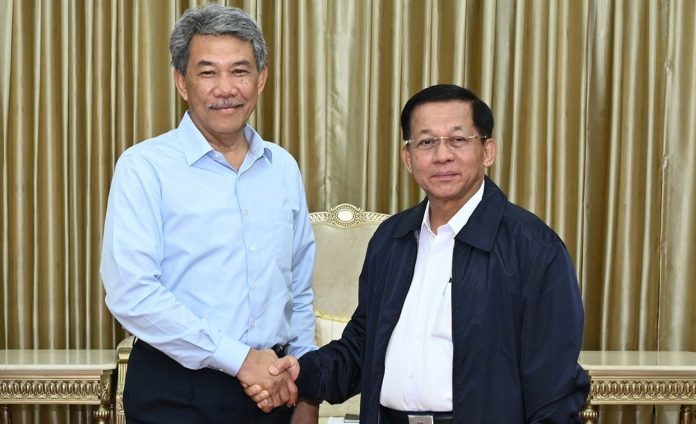Malaysia’s Foreign Minister Mohamad Hasan stated at a press conference during a visit to Naypyidaw on Saturday that as a representative of this year’s chair of the Association of Southeast Asian Nations (ASEAN), he welcomed the regime ceasefire announcement from April 2-22, but called on Naypyidaw to extend it.
“This country is facing a catastrophe,” said Hasan.“The most important thing is how the Myanmar people can be rescued and receive assistance.” Regime forces have carried out 46 air and artillery strikes across the country since April 2, according to DVB data. Sixty-seven civilians have been killed in 108 air and artillery attacks since the earthquake struck on March 28.
“Instead of spending every ounce of energy and resources on saving lives, [the regime] decided that it wants to take lives,” Tom Andrews, the U.N. Special Rapporteur on human rights in Myanmar, told DVB. He called on the international community to “insist” that the regime cease its attacks.
In a rare move for previous military regimes in Myanmar, Naypyidaw requested international assistance following the earthquake. But the regime has mandated that all relief efforts seek approval from local authorities or its embassies abroad.
It also continues to restrict access to the Yangon-Mandalay highway from 12 am to 4 am due to “security concerns.” Most international rescue teams and aid workers have arrived in the country via the Yangon International Airport.
Unseasonal rains on Saturday raised immediate public health concerns about the outbreak of infectious diseases as dead bodies remain buried beneath the rubble in Mandalay and Sagaing – two of the six regions hardest hit by the earthquake.
“Dead bodies still trapped under the rubble have been decaying for some time. The rainwater may carry bodily fluids from them, which may spread infectious diseases. The most dangerous of these is cholera,” a doctor assisting with relief efforts in Mandalay told DVB on condition of anonymity.
Mandalay residents staying in temporary shelters faced wind caused by the rain on Saturday. Some had to abandon their shelters as the wind destroyed an unknown number of their makeshift accommodations. Myanmar’s second largest city recorded at least 2,759 deaths as of Sunday, according to DVB data.
“The whole town smells of rot,” an aid worker in neighbouring Sagaing told DVB on condition of anonymity. At least 696 bodies had been recovered in Sagaing as of Sunday, according to DVB data. Sagaing is located 14 miles (22 km) west of Mandalay.
Many residents in the six regions impacted by the earthquake, including Magway, Bago, Naypyidaw and Shan State, have spent the last 10 days living outdoors, as some homes have been destroyed, some deemed uninhabitable, and some residents may no longer feel comfortable staying in-doors.
The number of aftershocks has reached 383 as of April 7, according to the Thai Meteorological Department’s Earthquake Surveillance Division. The Myanmar Department of Meteorology and Hydrology has recorded 97 aftershocks over the same period.
“We have drinking water, but have to rely on murky river water for cleaning and cooking. We also lack toilets,” said a Sagaing resident.
DVB has documented that the death toll from the earthquake is 4,316 with 6,588 injured, and 448 still missing. The regime updated its figures to 3,514 bodies recovered, 4,809 injured, and 210 missing, as of April 6.



